Landscaping - Manual Materials Handling
On this page
What are some general good habits?
Back to top- Assess the load to be lifted and the overall conditions. Get assistance with items that appear too heavy or awkward. Ensure that there is enough space for movement and that you can walk along the surface safely.
- Stay balanced - keep your feet shoulder-width apart, with one foot beside and the other behind the object to be lifted.
- Carry the object close to your body. To change direction, turn your whole body by shifting your foot position - don't twist your body!
- To lower object, bend your knees - not your back!
There are many tips in other Landscaping OSH Answers documents.
What are some guidelines for lifting?
Back to top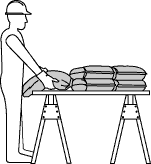
Store bags at waist height
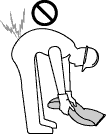
Do not bend over and try to lift the bag all at once
How do you lift heavy objects from ground level?
Back to top
Raise bag upright

Put one knee against bag

Pull bag up the leg

Rest bag on edge of knee of the other leg

Stand upright

Carry the load with your back in upright position
What are some guidelines for transferring objects?
Back to top- Reduce the load on your back by transferring your body weight. Shift your body weight from one leg to the other. Avoid twisting your back. Momentum helps move the load.
- Use the following sequence of motions for moving heavy or bulky materials such as patio stones, sidewalk slabs, cement blocks, bulbed trees, rolled sod, etc.
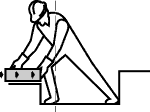
Pull material towards you
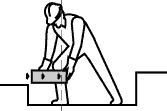
Transfer your weight to the lift side
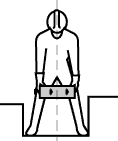
Lift only to level required
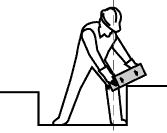
Shift weight to your other leg
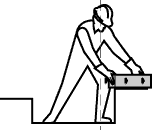
Push material into position
- Fact sheet confirmed current: 2022-04-05
- Fact sheet last revised: 2008-01-31

